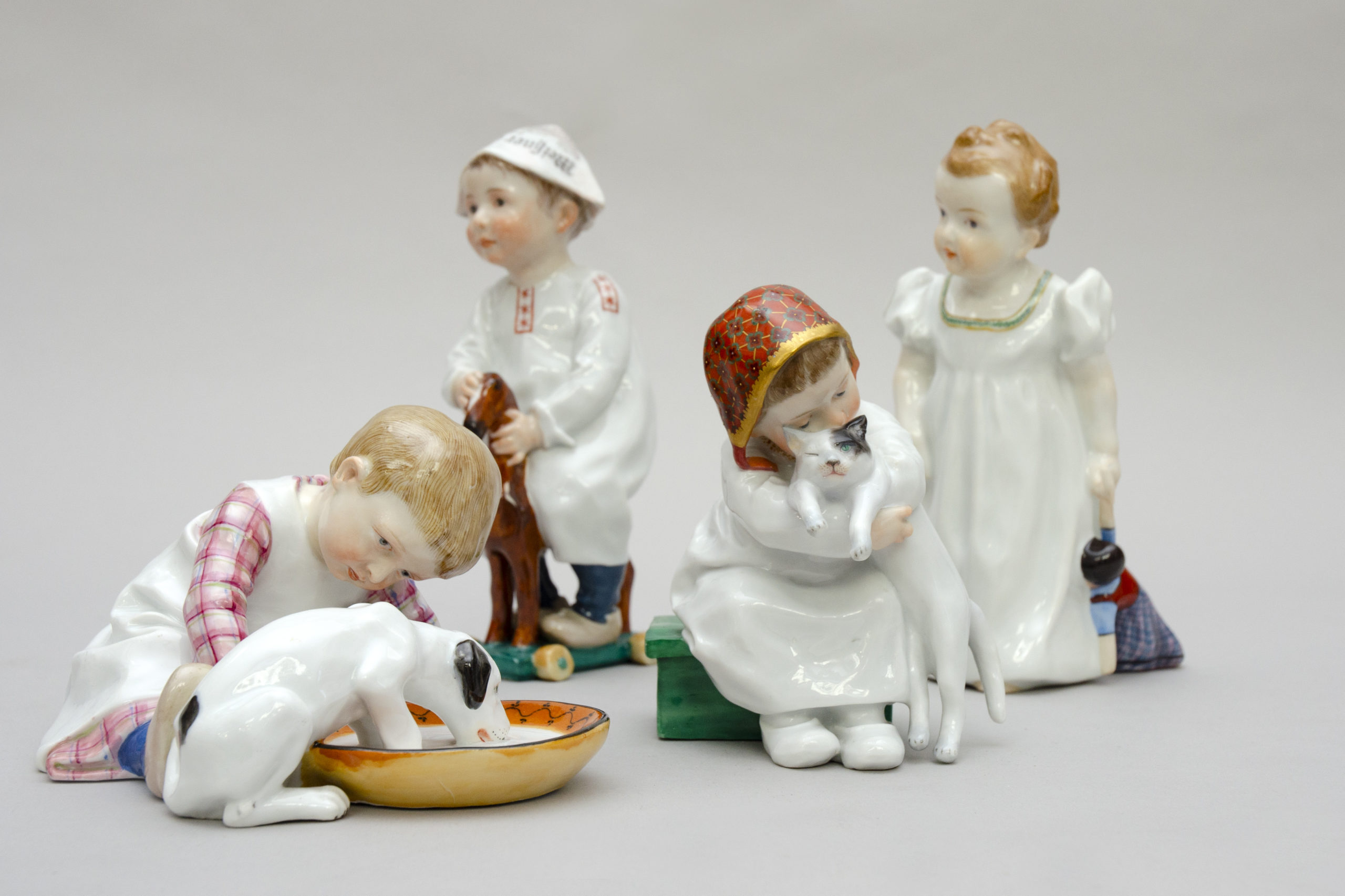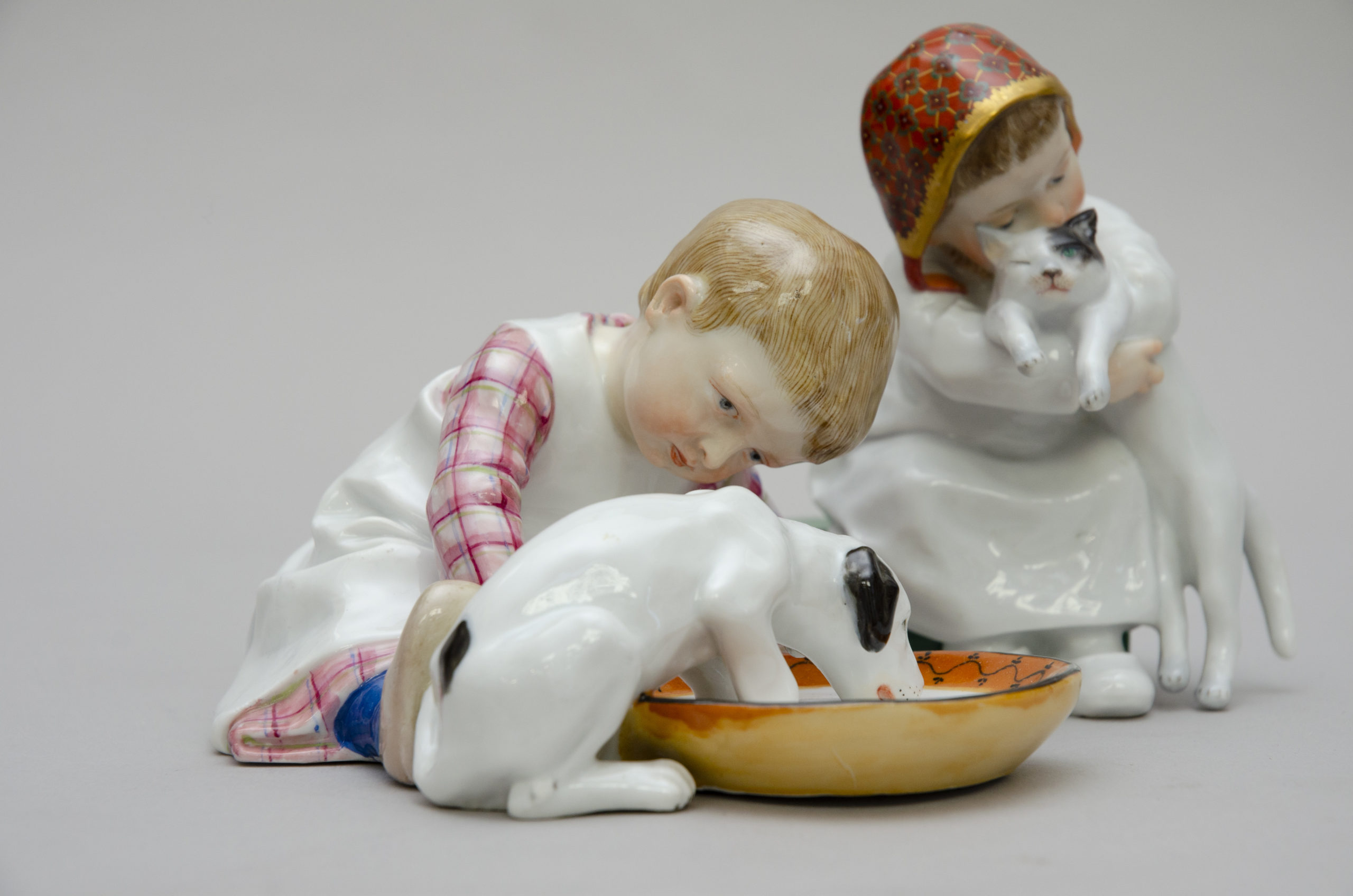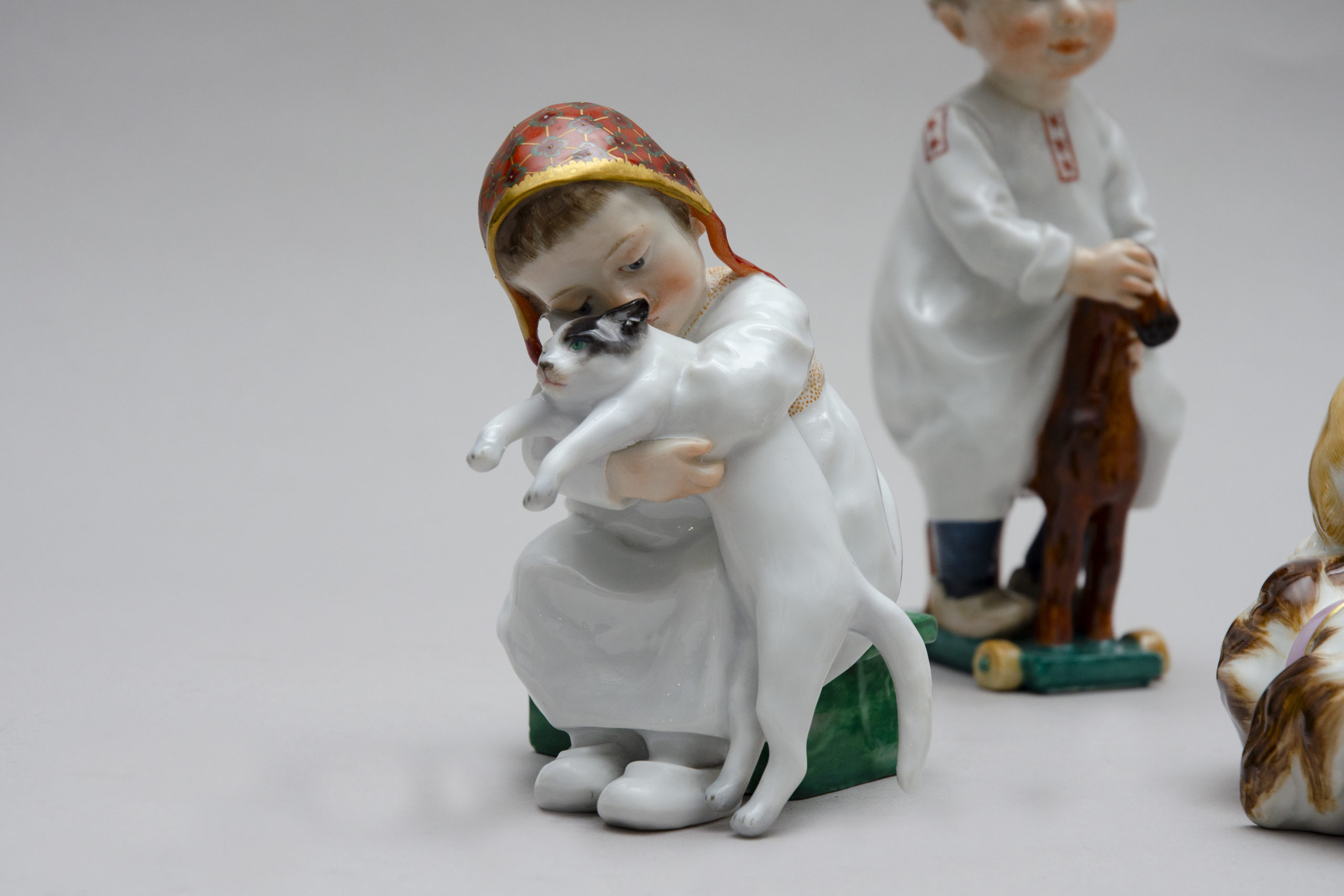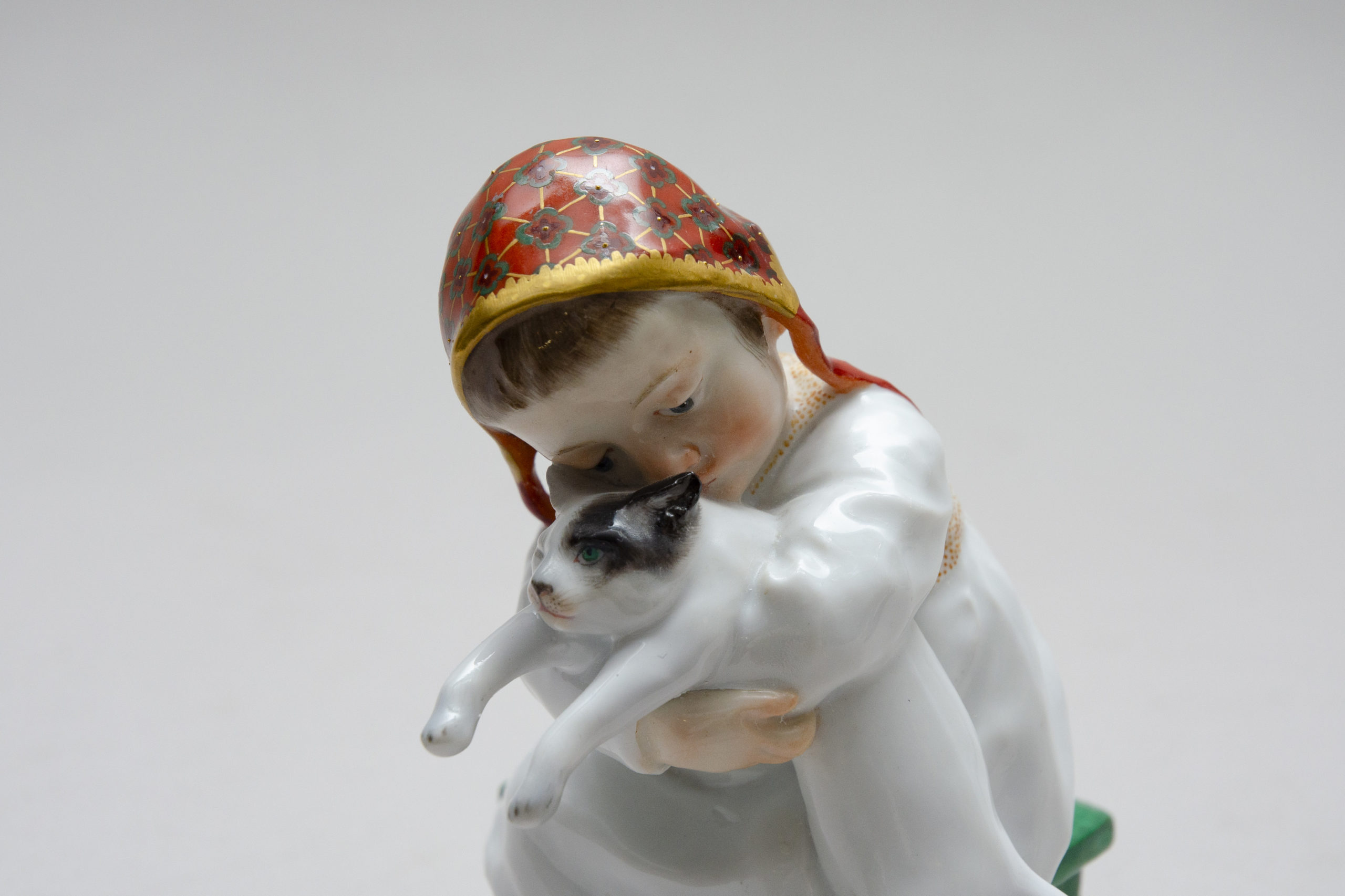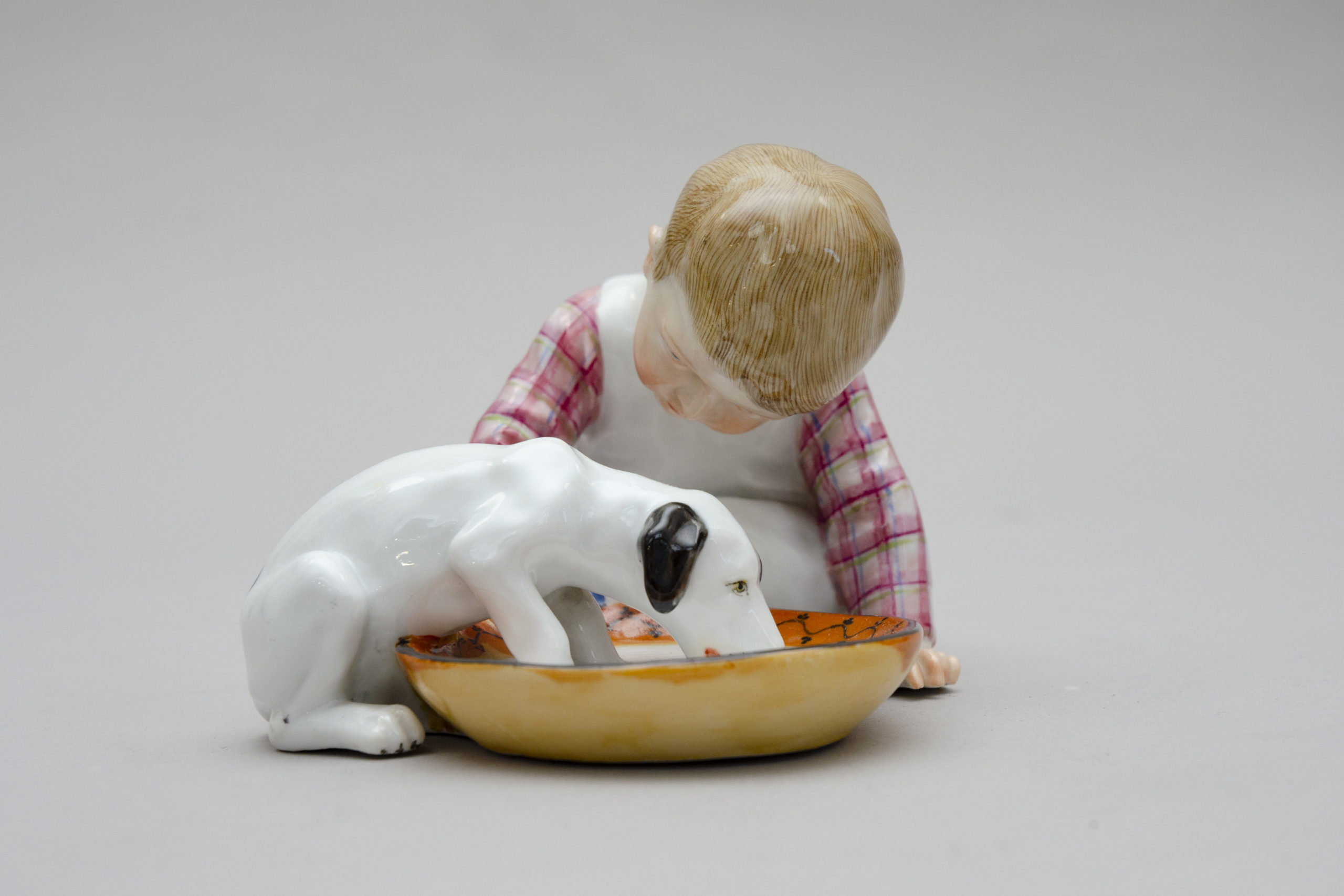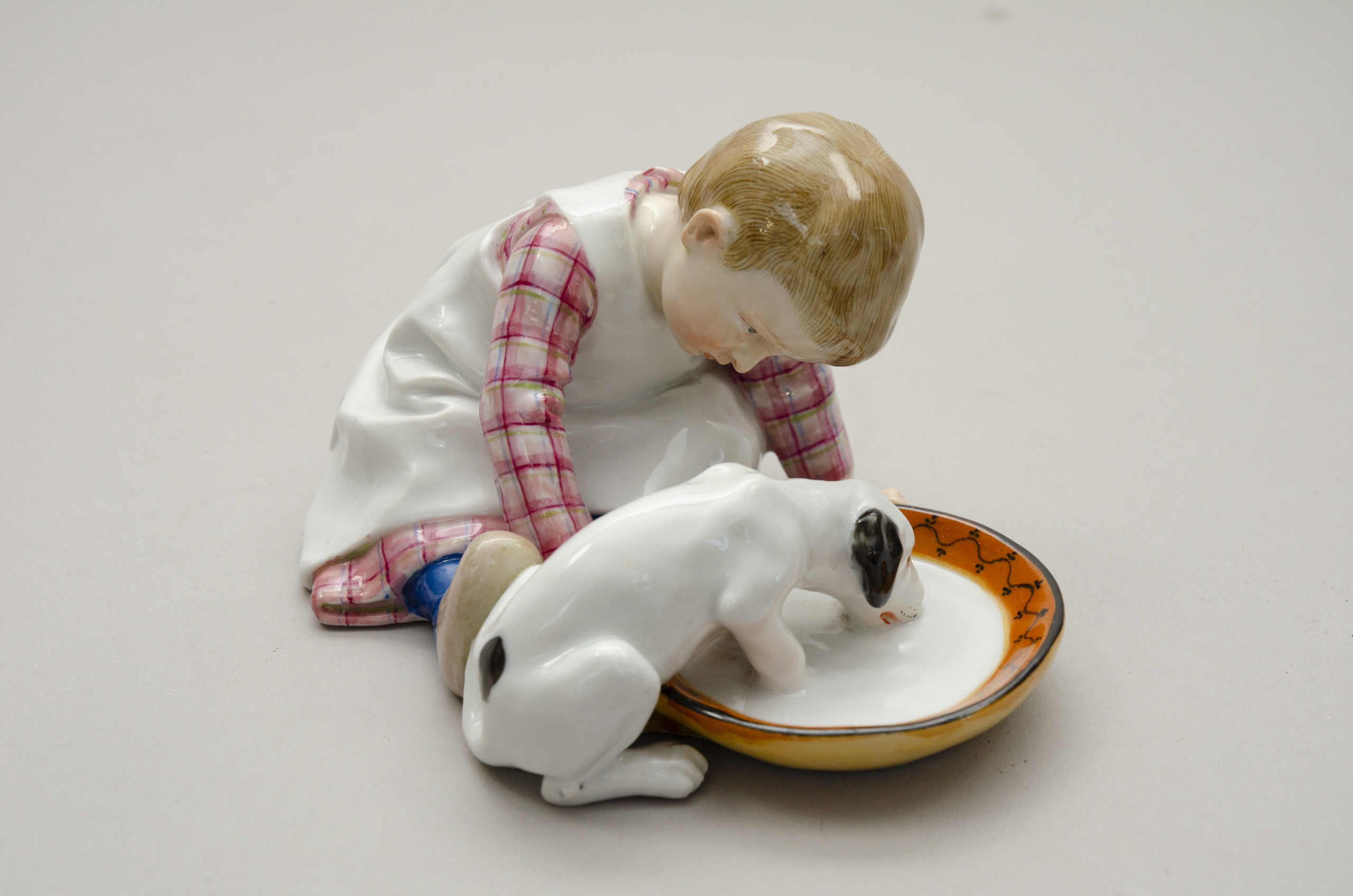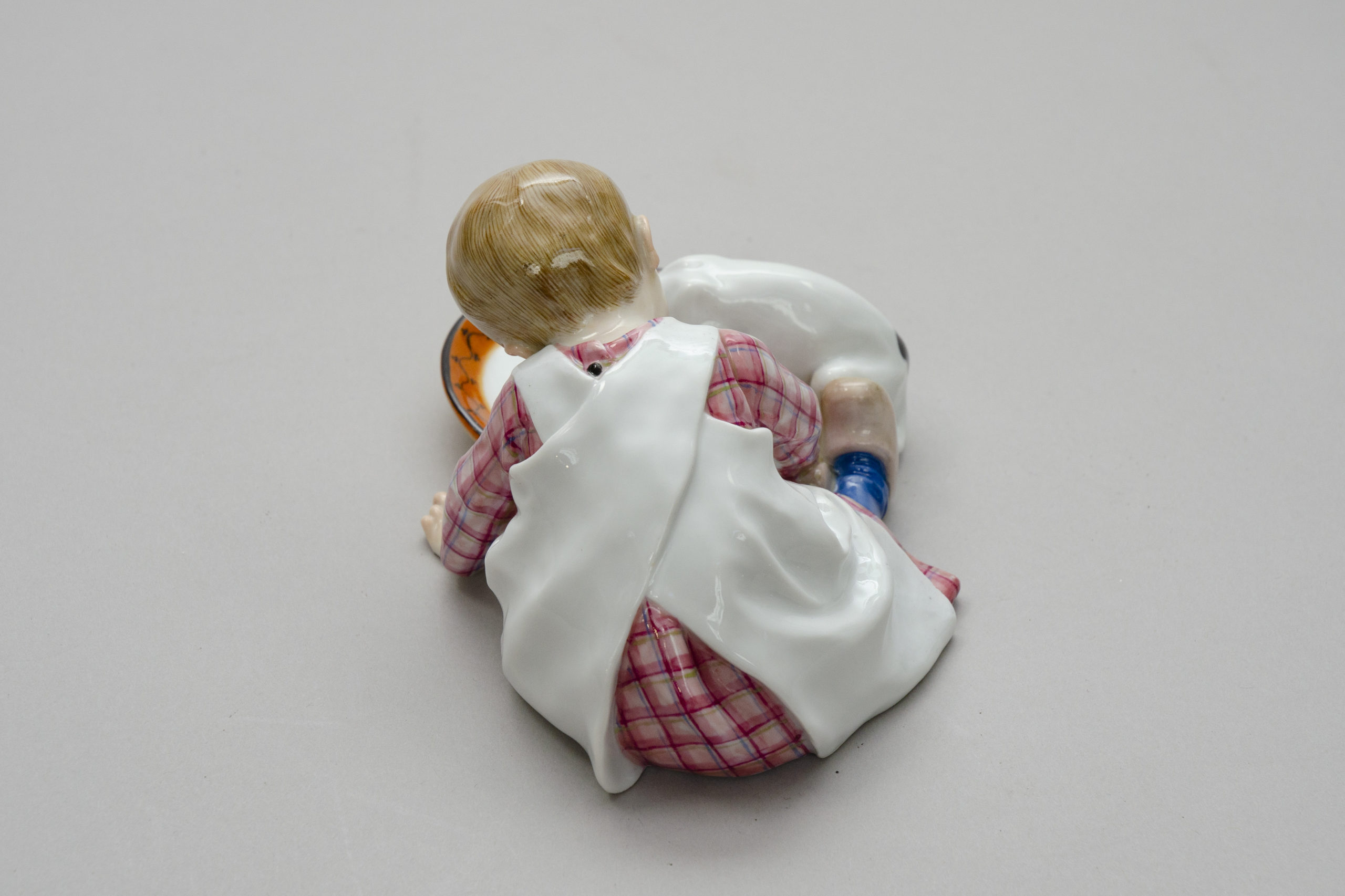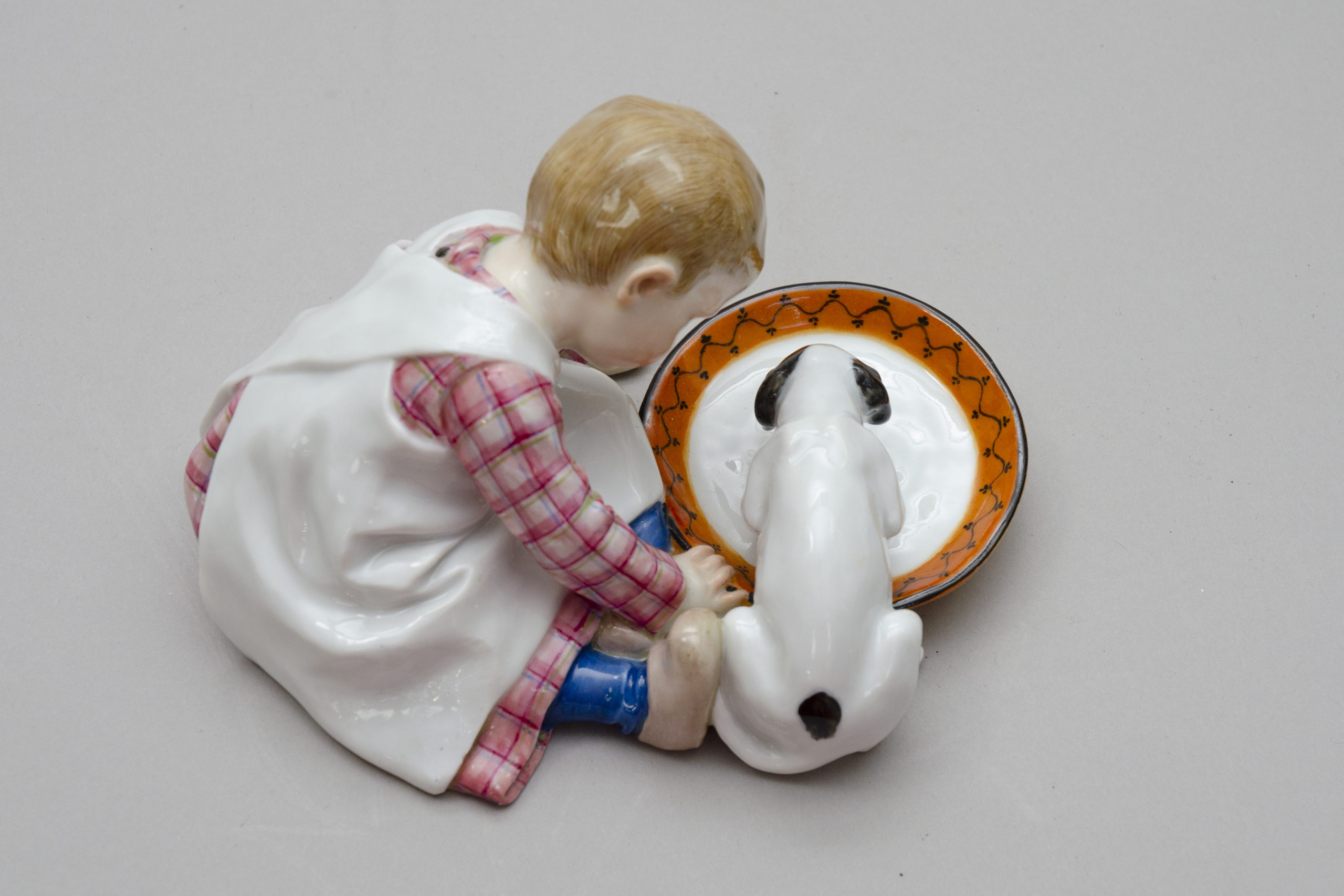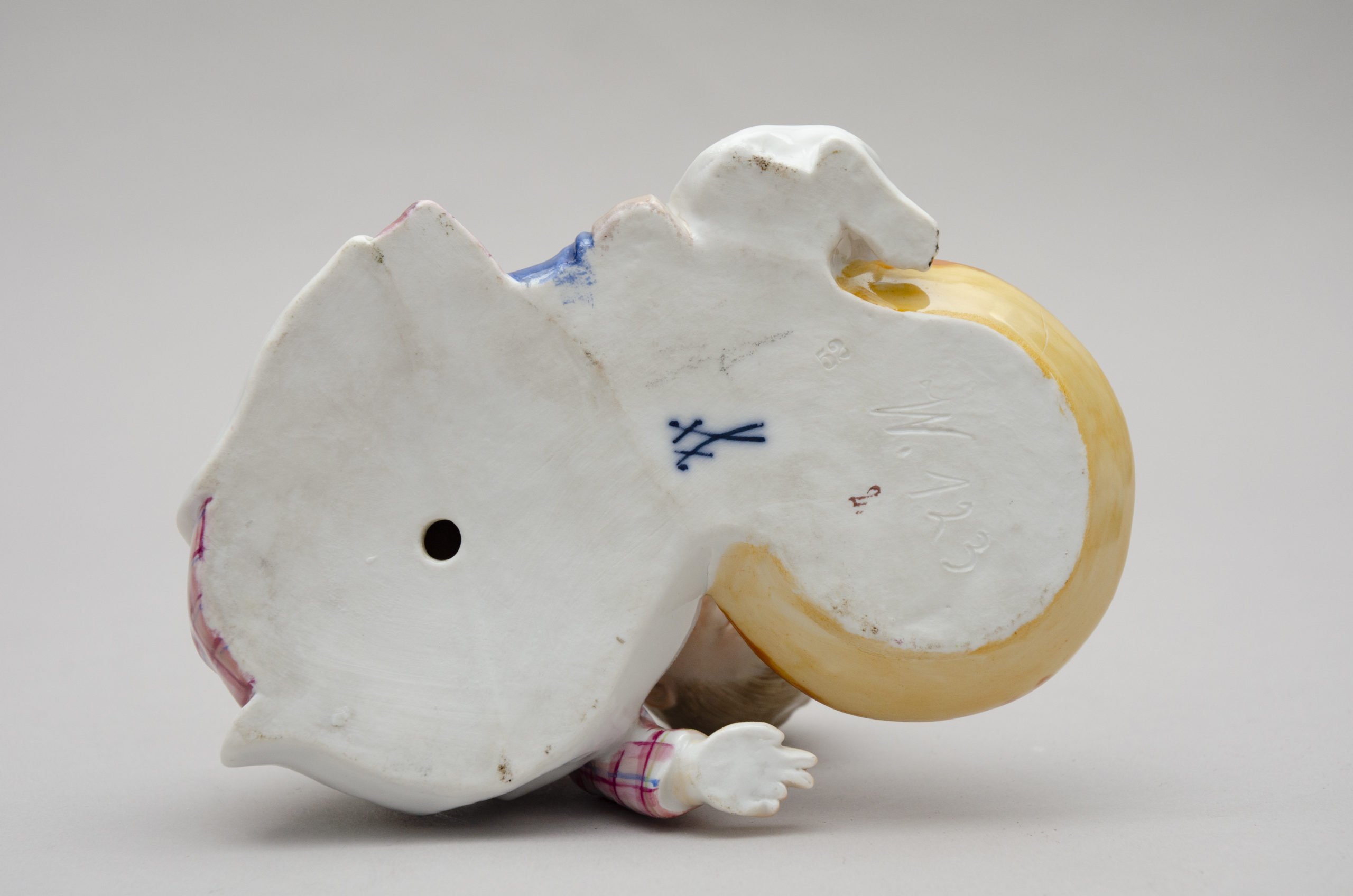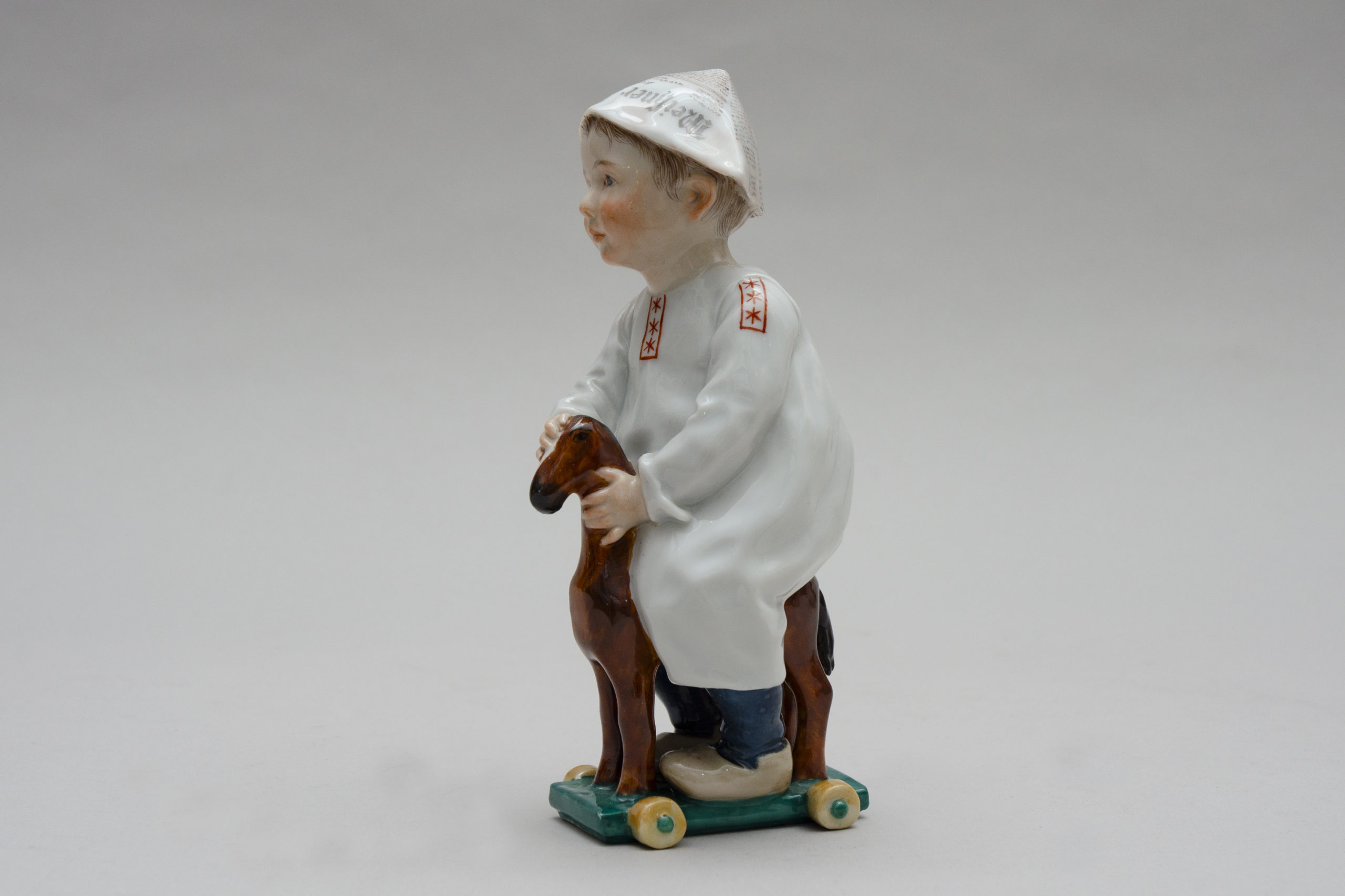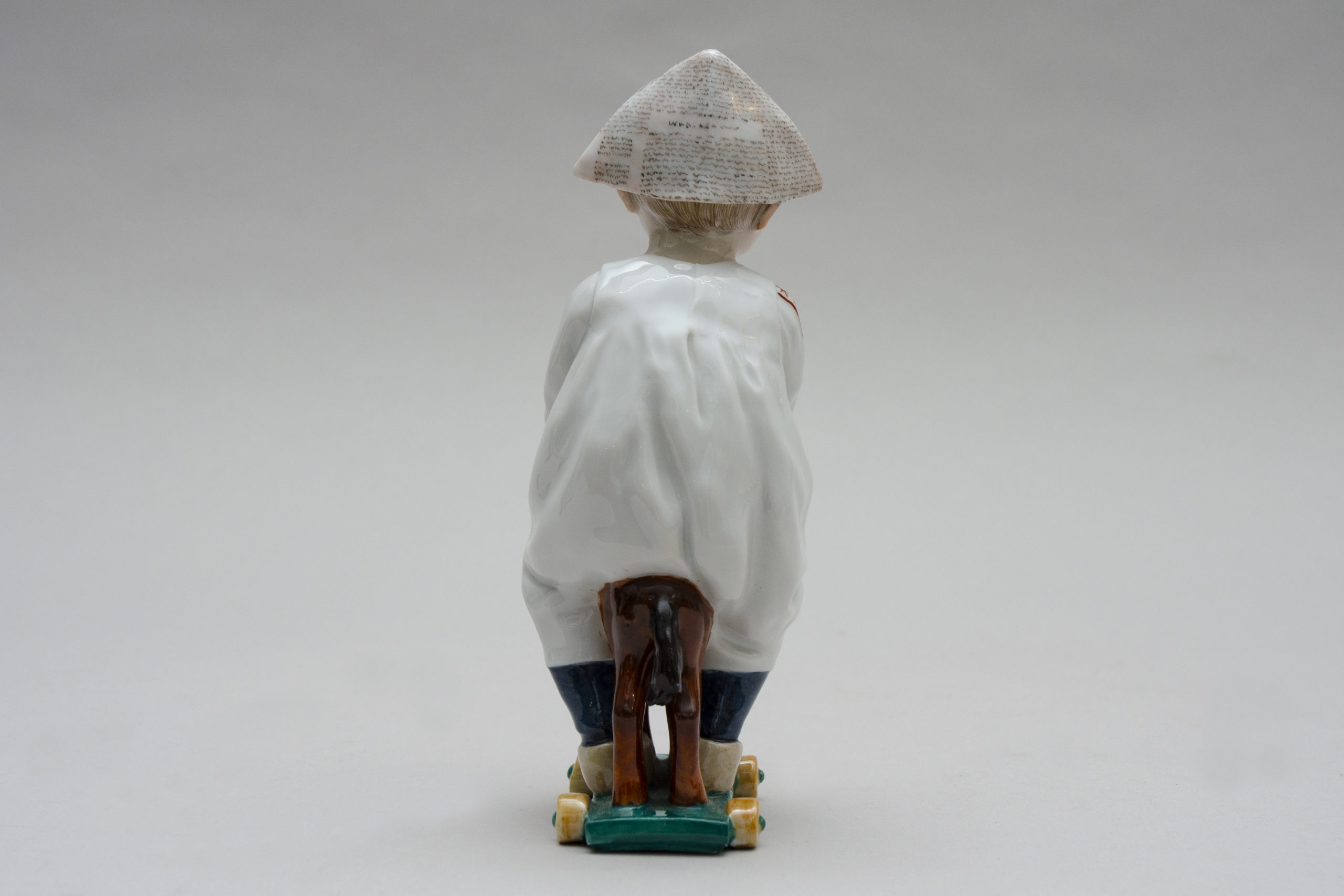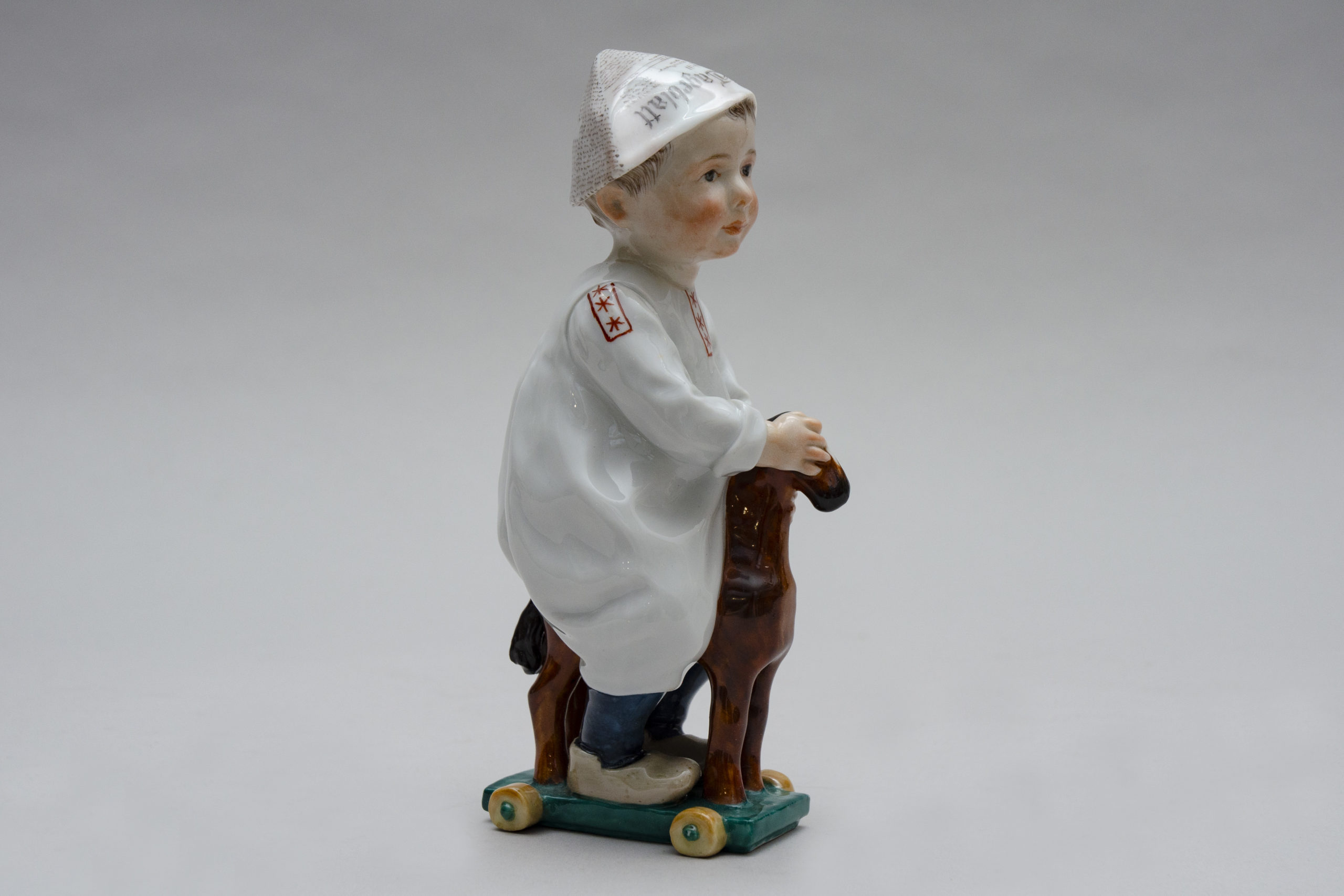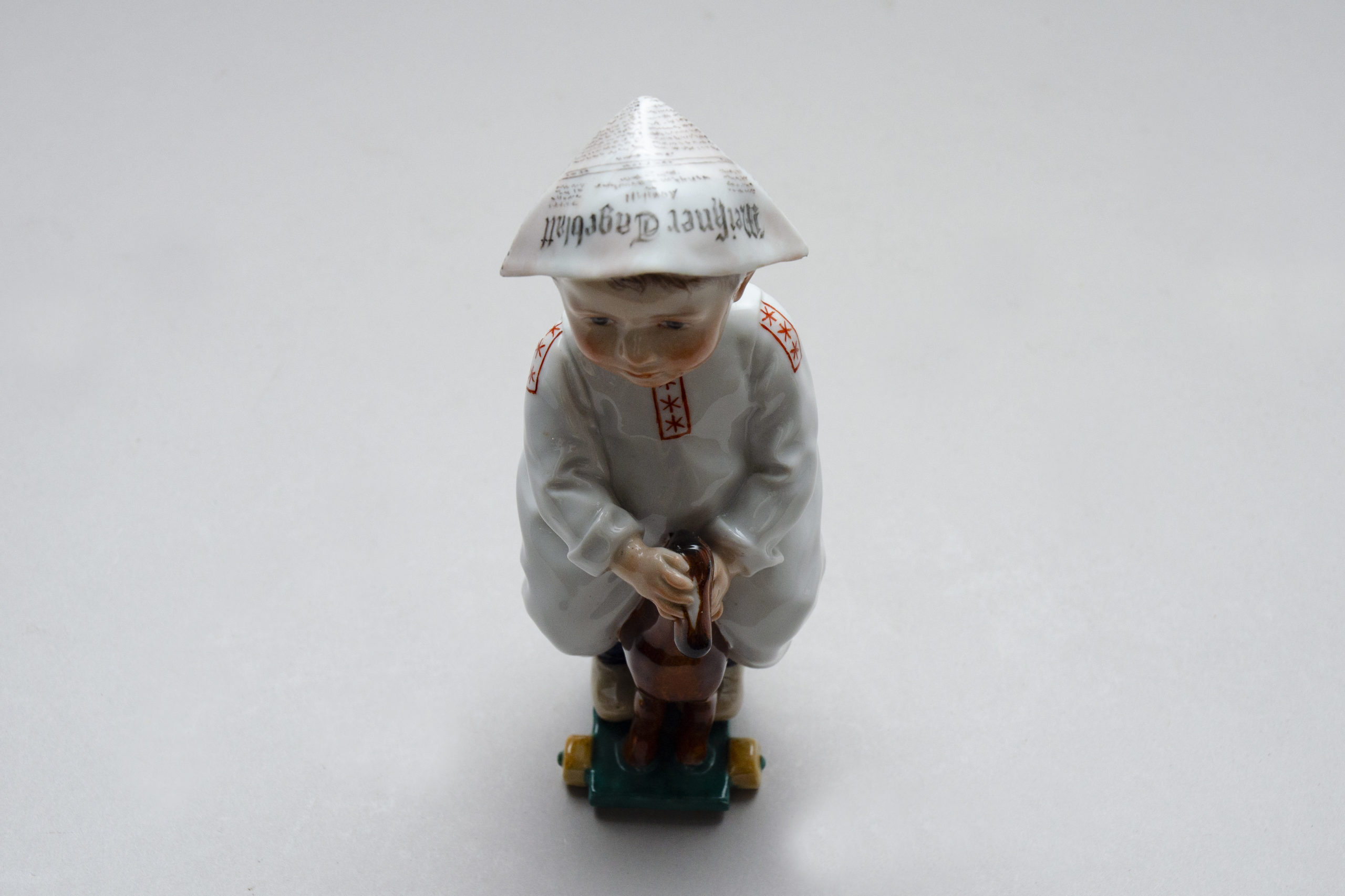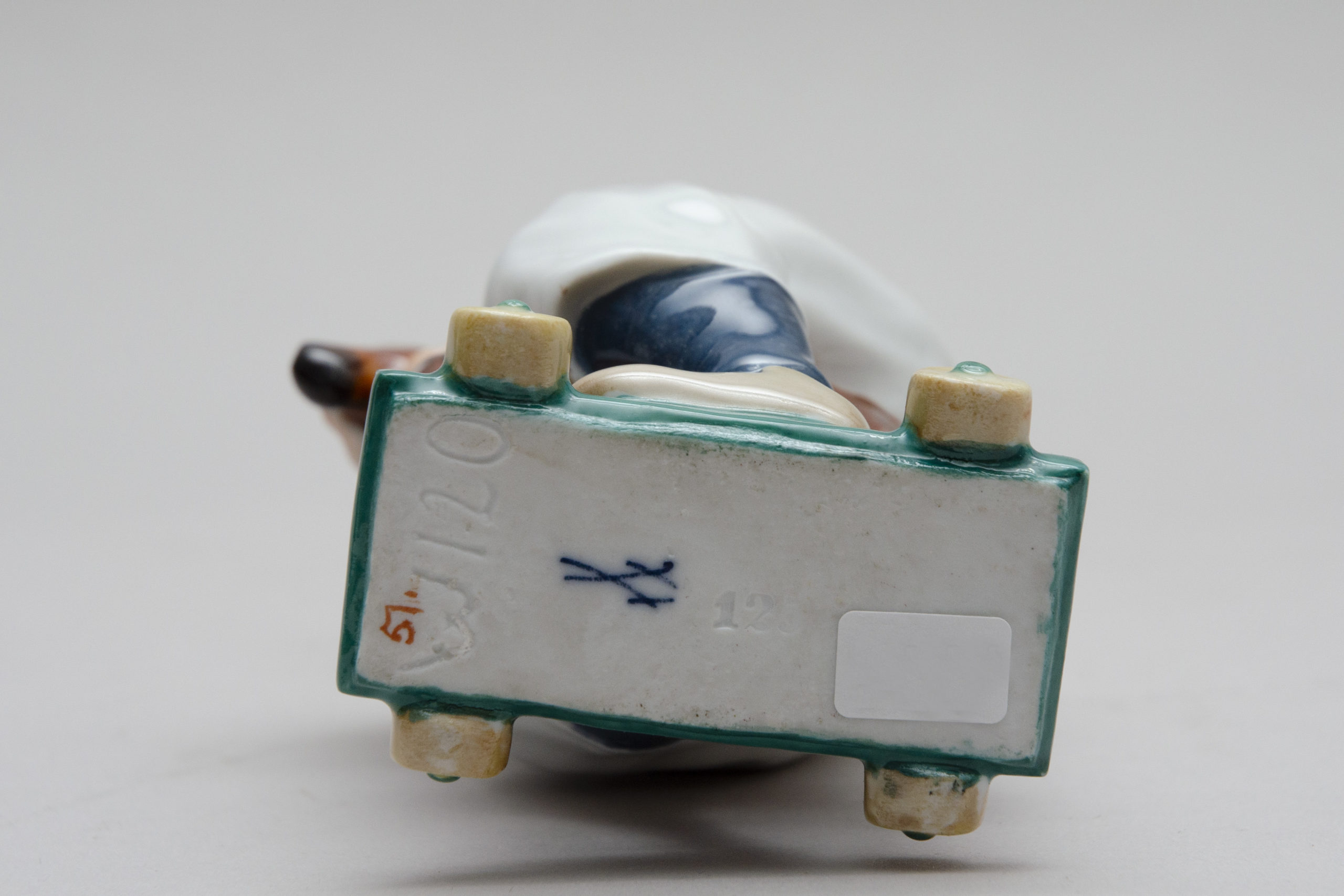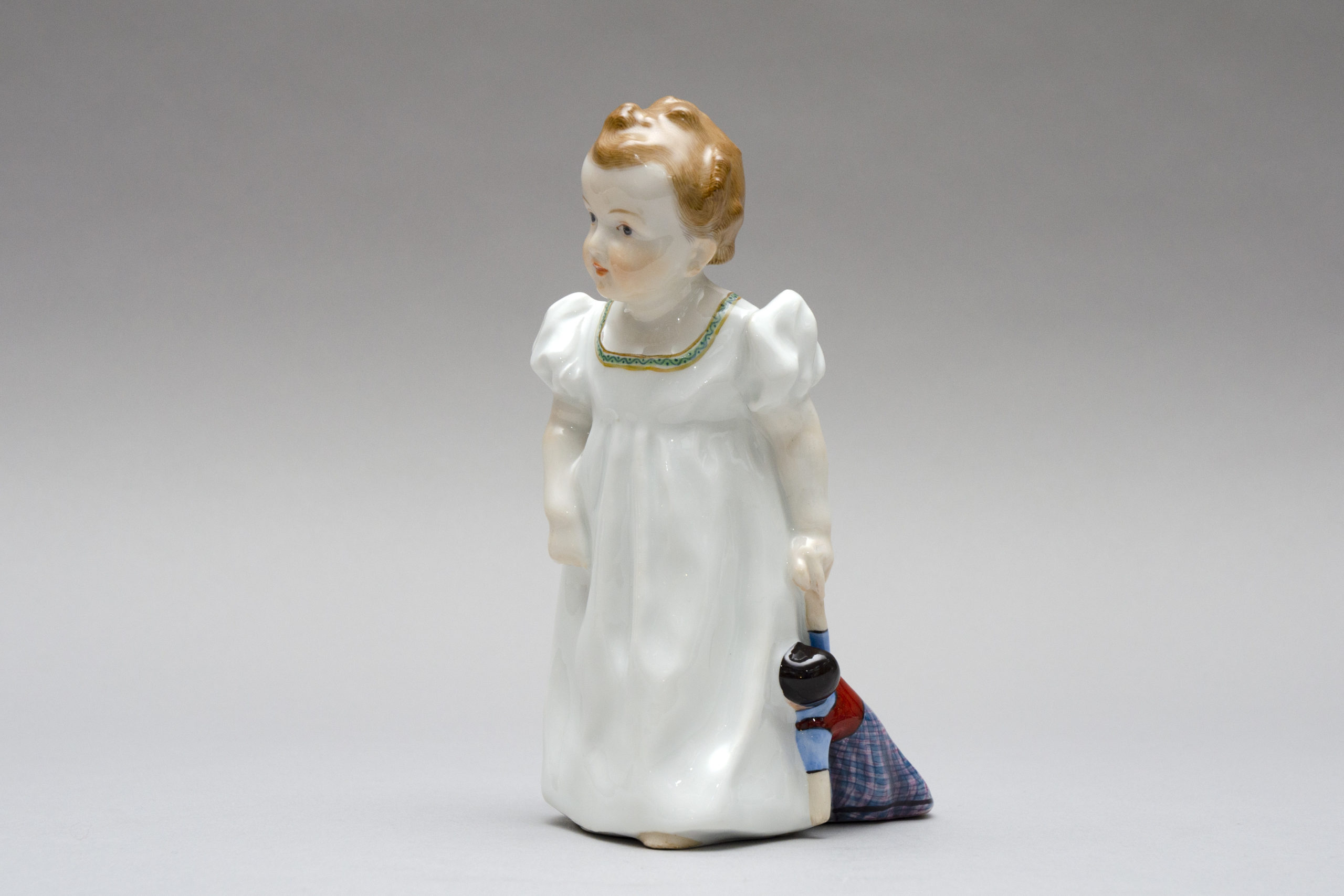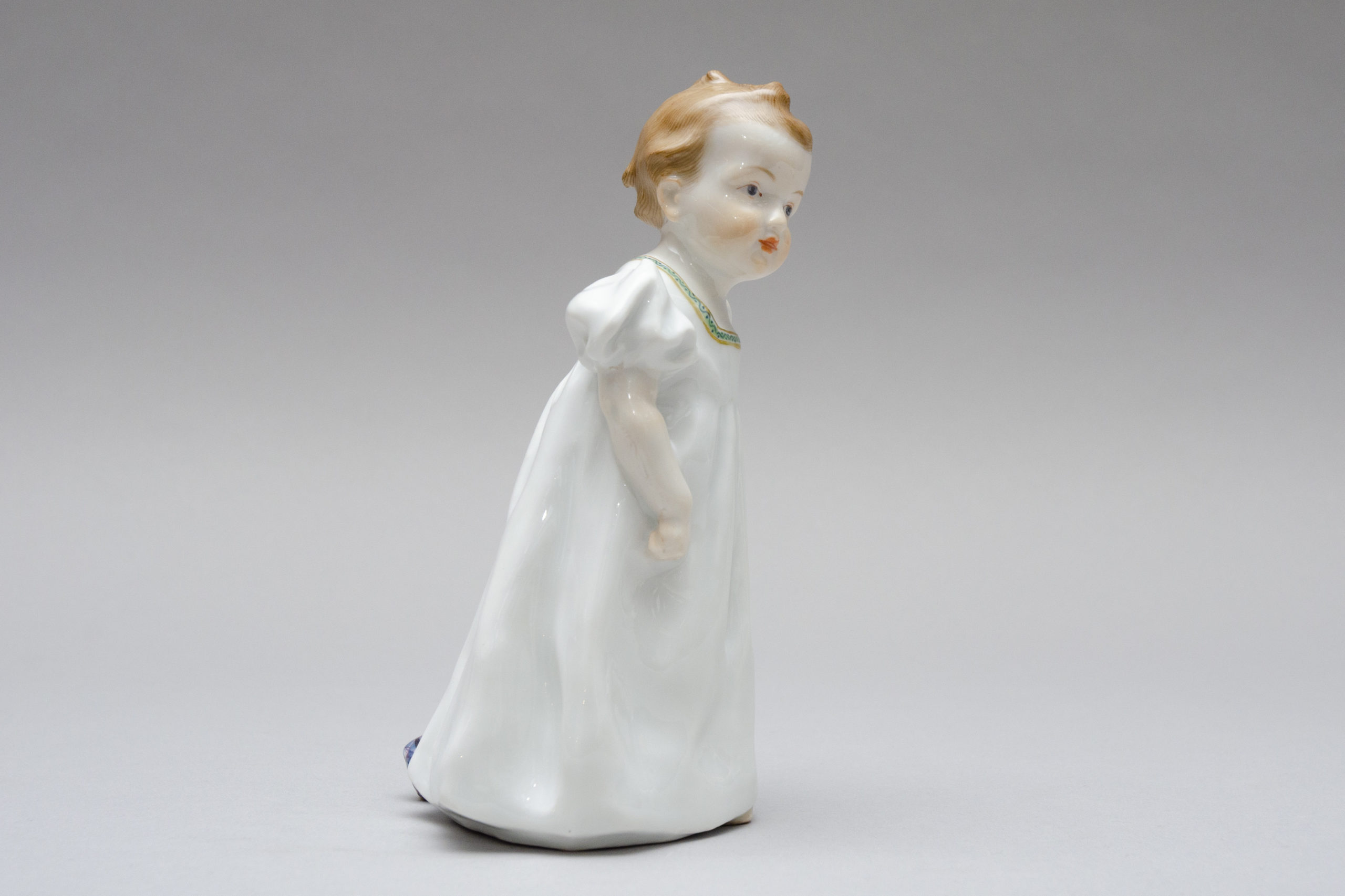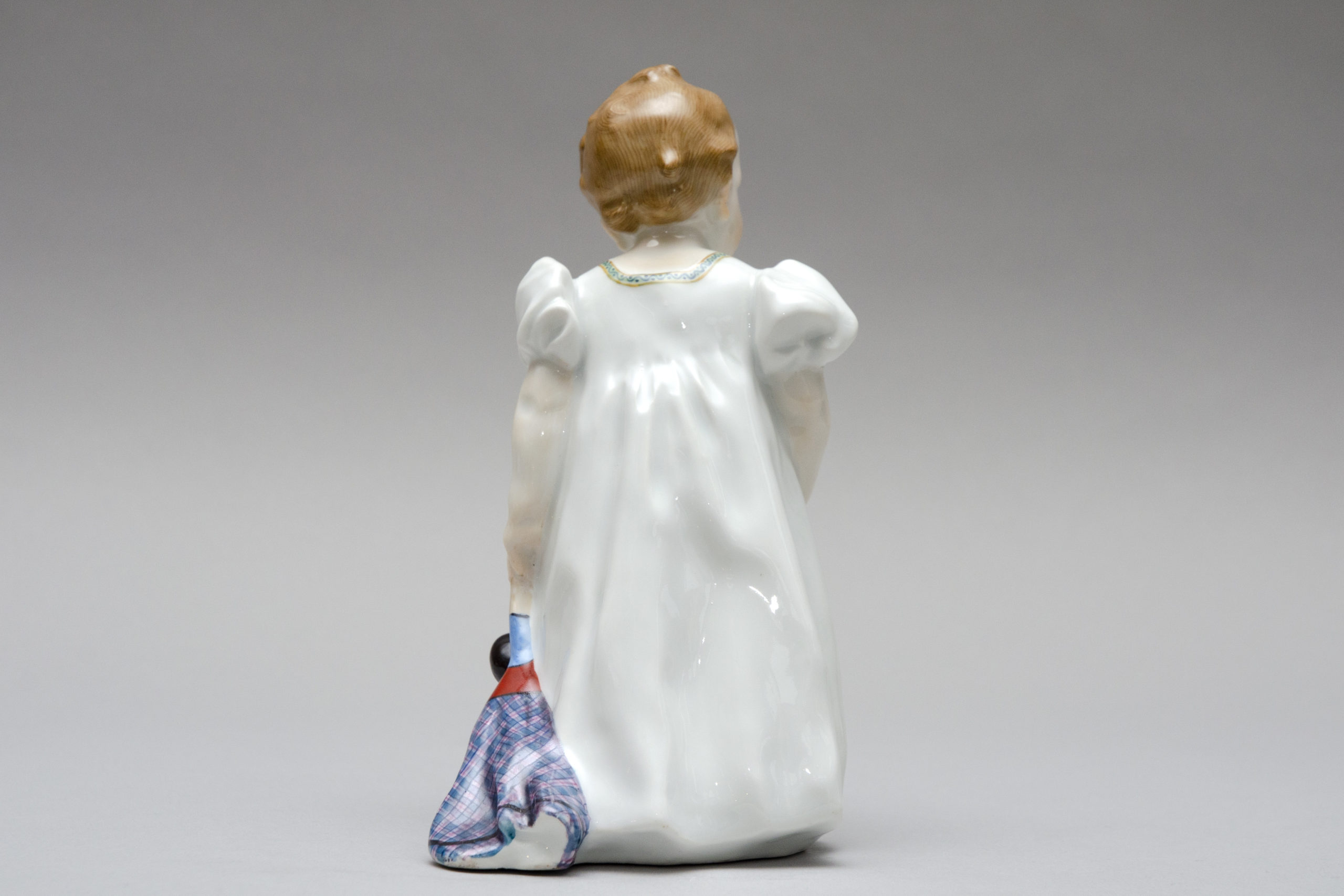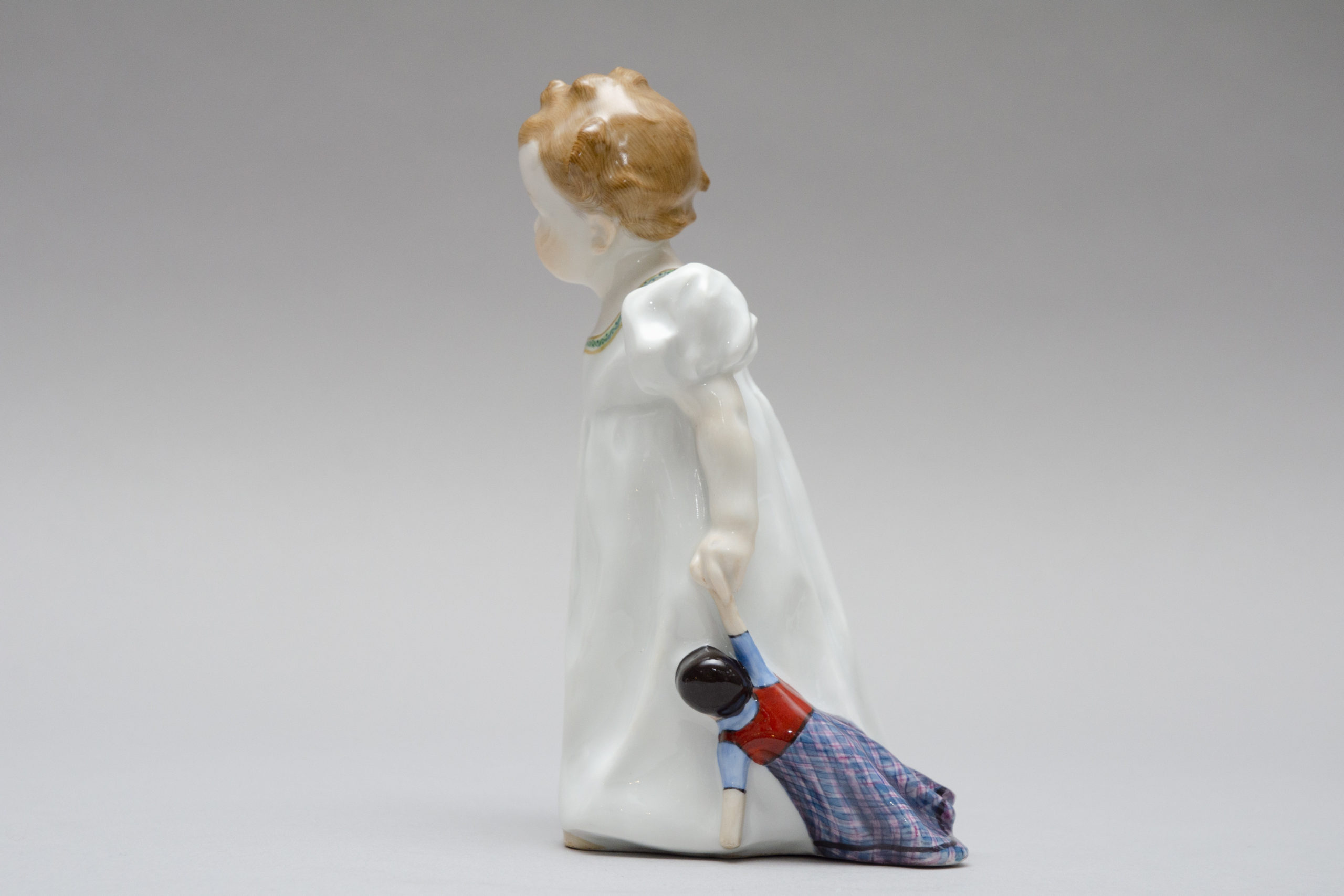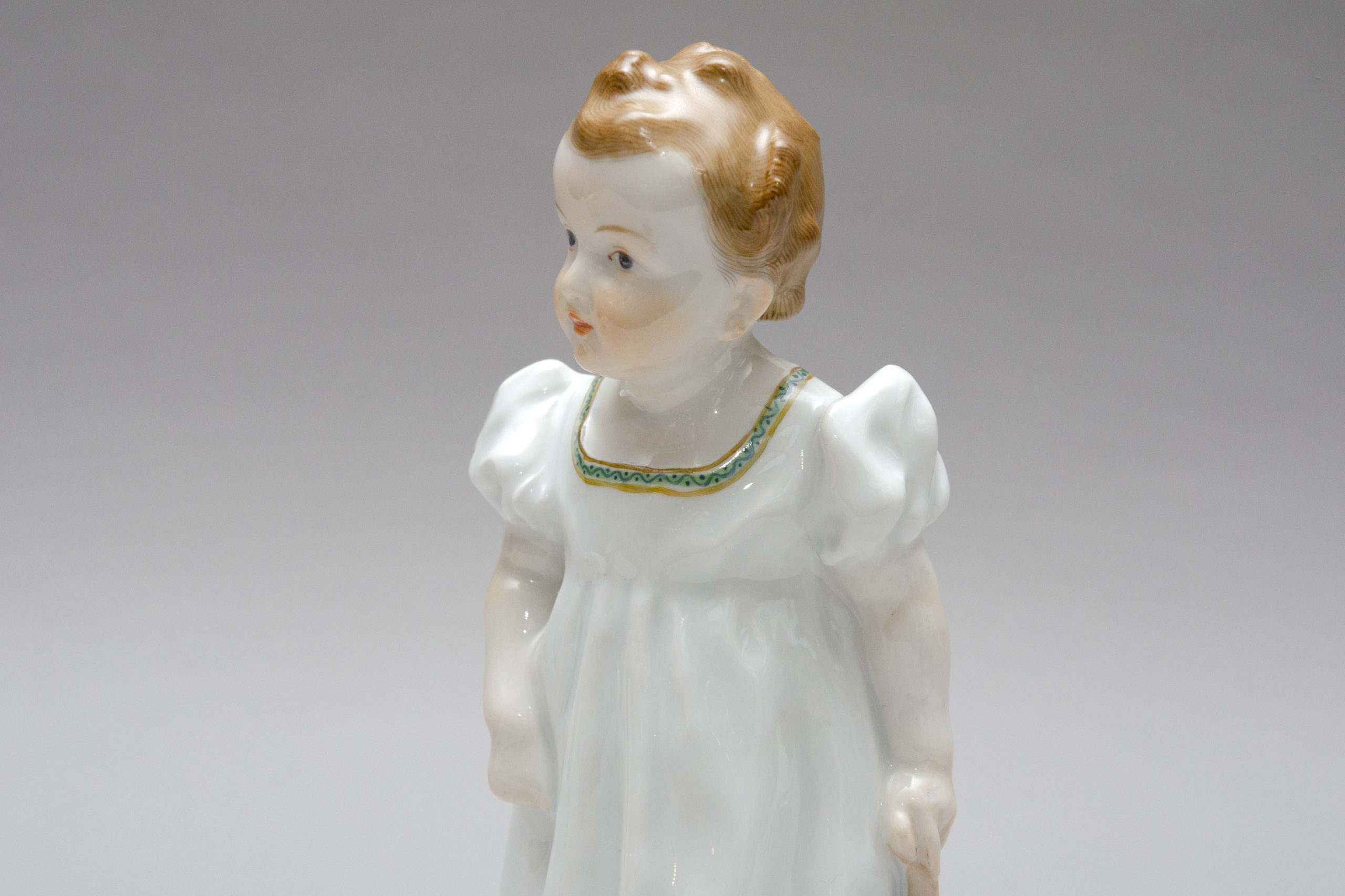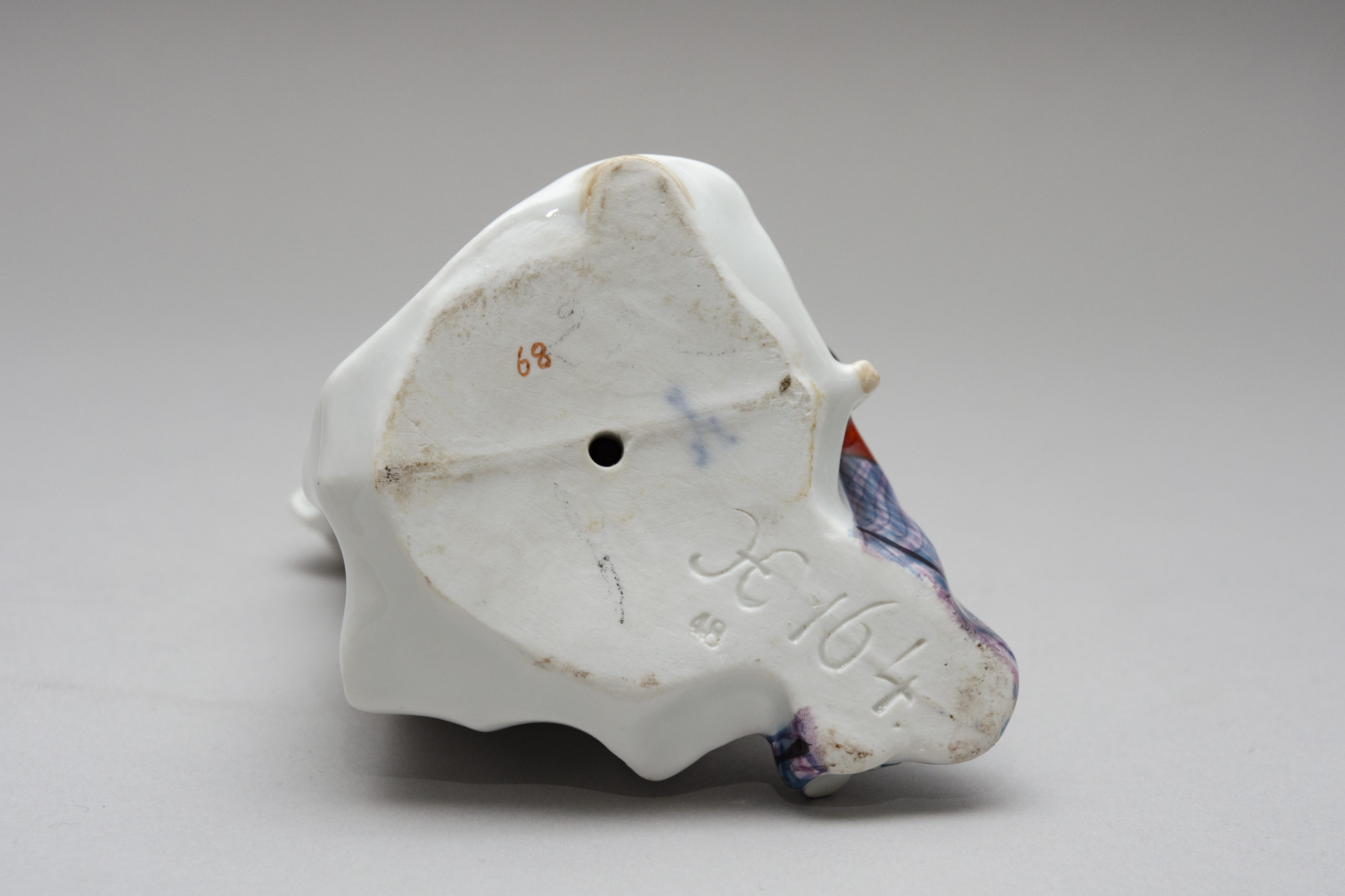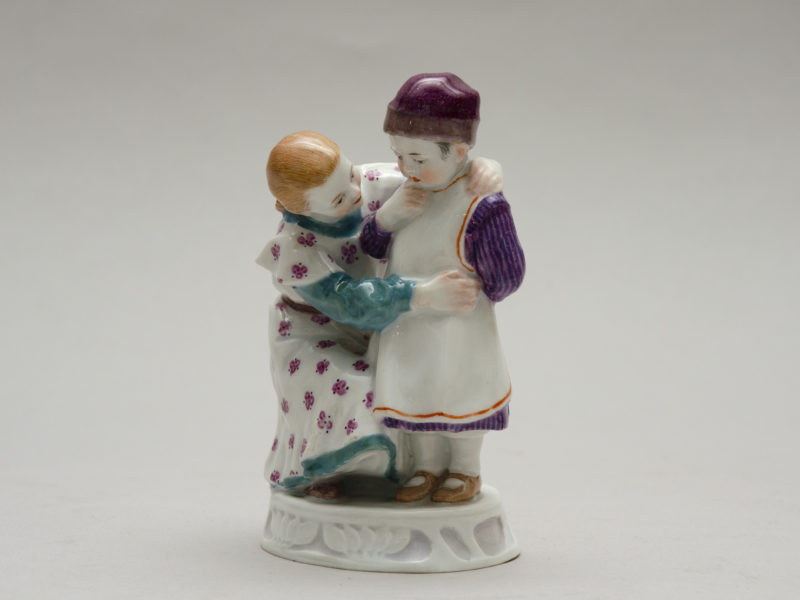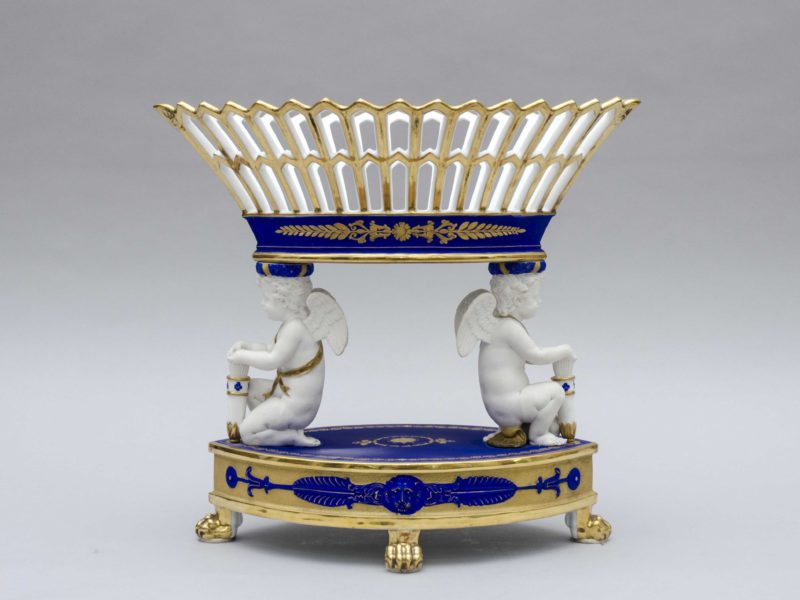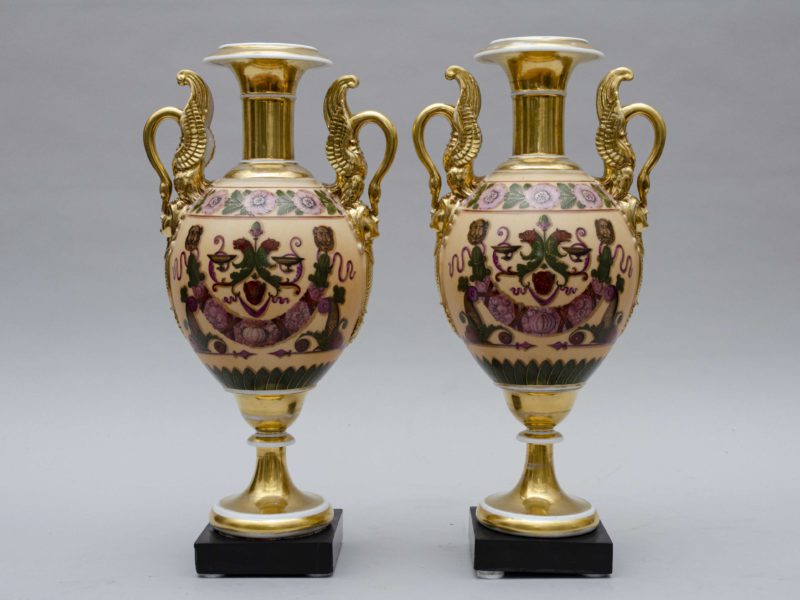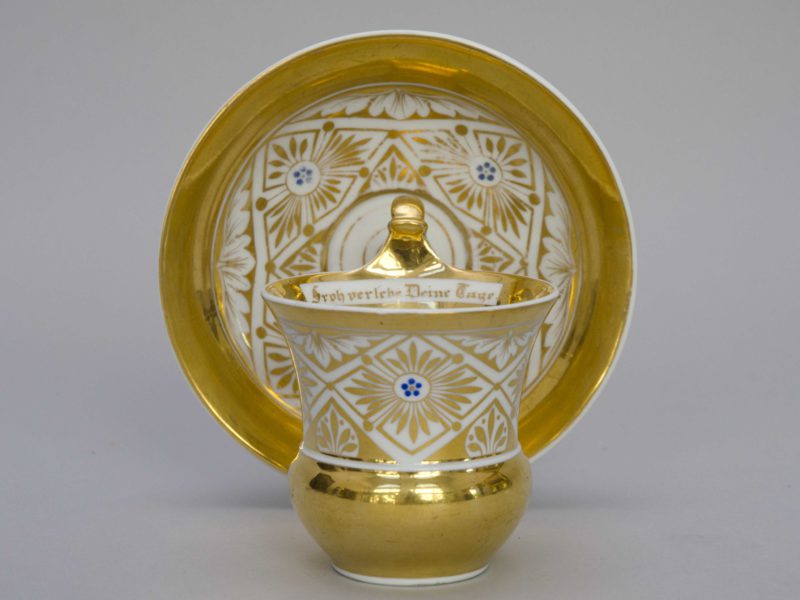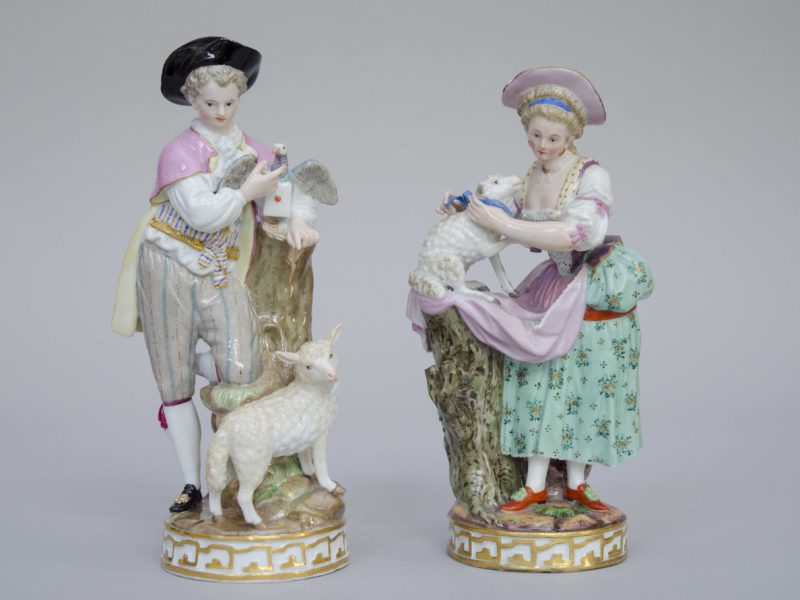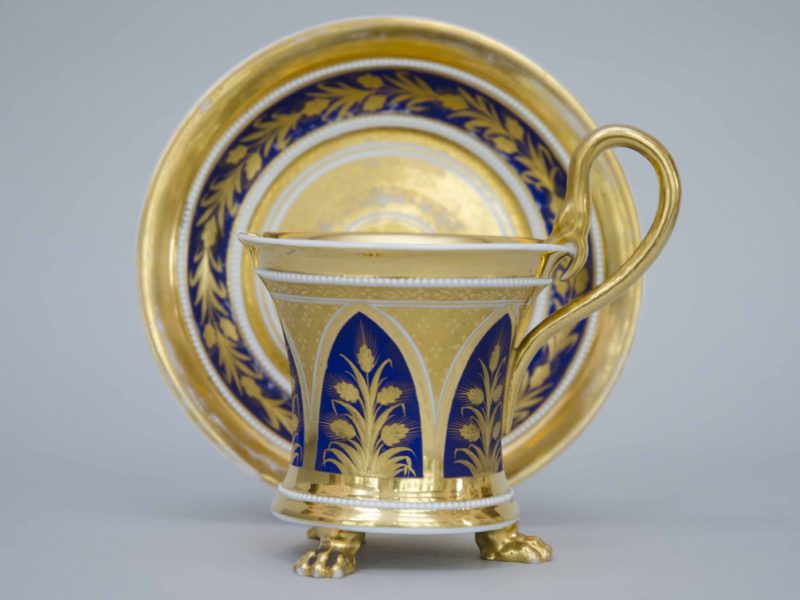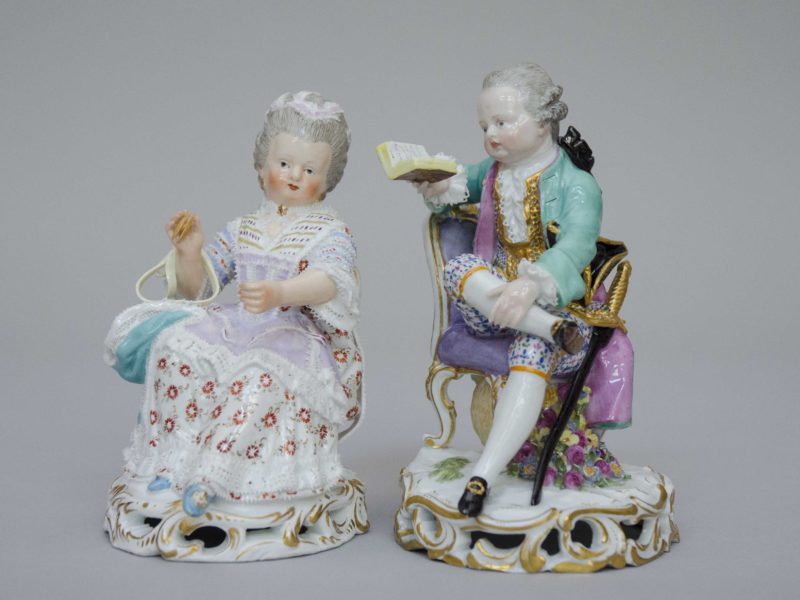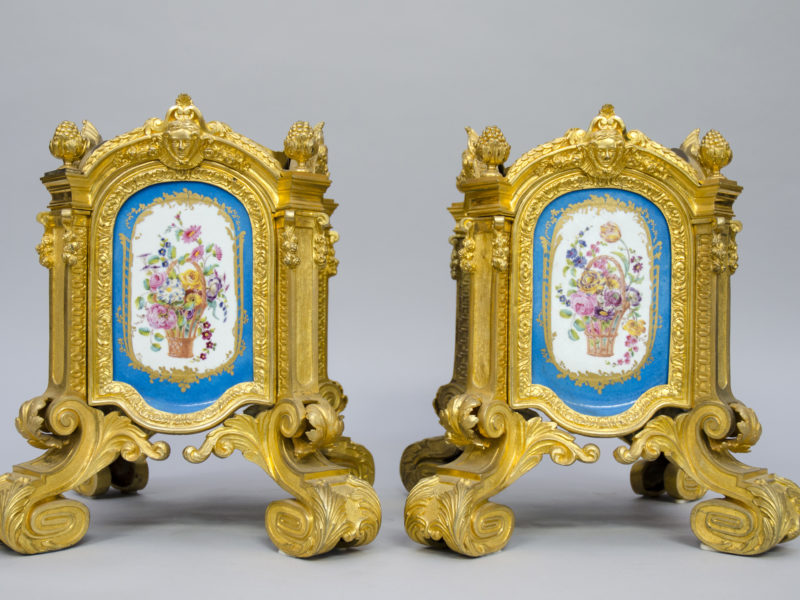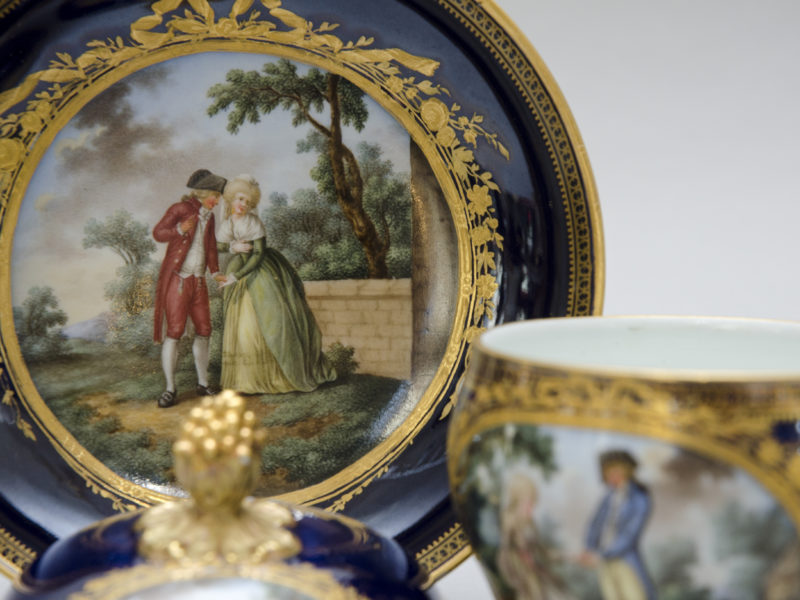
« Enfants d’Hentschel », porcelaine de Meissen
Prix sur demande
En stock
Nous contacterEnsemble d’enfants dit « de Hentschel ». Une petite fille est assise et serre son chat, un autre enfant regarde son petit chiot boire du lait dans un bol. Une petite fille debout tient sa poupée par la main. Le dernier est un garçon coiffé d’un chapeau de journal et chevauchant un cheval de bois à roulettes. Porcelaine de Meissen, époque 1905-1924. Modelés entre 1904 et 1905 par Konrad Hentschel pour la manufacture de Meissen.
Dimensions : H : 12 cm — H 17cm – H 18 cm
Manufacture de Meissen, période Art nouveau.
Konrad Hentschel est né le 3 juin 1872 à Cölln près de Meissen. Il est le fils du peintre sur porcelaine Ernst Julius Hentschel (1843-1928) qui avait également travaillé de manière extrêmement créative à Meissen de 1861 à 1914 dans les domaines de la nouvelle peinture Pâte-sur-Pâte et de la peinture couleur à chaud. Il avait épousé Emma Auguste Clauss (1843-1921), mère de leurs deux fils, Rudolph et Konrad.
Konrad étudie le dessin à la manufacture de Meissen. De 1891 à 1893, il étudie la sculpture à l’Académie des beaux-arts de Munich sous la direction du professeur Wilhelm von Rümann. Il retourne à la manufacture de Meissen comme « bossier », effectue un voyage d’étude en Italie en 1896 et devient modéliste à la manufacture. De 1899 à 1901, il étudie la sculpture à l’Académie des Arts de Dresde avec les professeurs Karl Heinrich Epler et Robert Diez. En 1900, il reçoit un prix académique, la « Grande Médaille d’Argent ». Il reste simultanément attaché à Meissen, pour qui il crée le déjeuner « Crocus» (1896) pour l’Exposition universelle de Paris en 1900 (sans doute en collaboration avec son frère Rudolf). Konrad Hentschel développe progressivement des figurines d’enfants de 1904 à 1907, malgré son célibat, il capte ce monde magique de l’enfant jouant, naturel et indépendant. Konrad et Rudolph (modeleur à Meissen également), les frères Hentschel, s’épanouissent sous la direction artistique du jeune Erich Hösel depuis 1903. Un vent de fraicheur s’abat sur l’esthétisme des créations Jugendstil de la manufacture. Il mourut jeune, à seulement 35 ans, le 8 juillet 1907 d’une « crise cardiaque » à Meissen.
Lit: Meissen was founded in 1710 in the gothic Albrechtburg castle. It was the first porcelain manufacturer in Europe. The previous year, in German Dresden, the alchemist Johann Friedrich Böttger, “goldmaker” and prisoner of Augustus the Strong (Elector of Saxony and king of Poland) had made the discovery. Initially the factory made fine red Böttger stoneware, with relief and engraved designs. The first true porcelain, put on the market in 1713, was similar in style, in the form of teaware, statuettes and Chinese style figures. From 1720, the porcelain became brilliant white, the enamel colours were improved, the designs were fantastic “chinoiseries”; it was the era of the painter-decorators with J. G. Höroldt as a leader. In the 1730s under the Count Brühl’s directorship (until 1752), the sculptors, with J.J. Käendler at their head, became dominant, producing a range of characters, animals and birds, dinner services richly decorated in relief, and sculptural vases and tablewares. From 1756-1773 meissen porcelain was marked with the crossed swords with a dot in between the handles, known as the “dot-period”. This period marked the transition towards the neo-classical style. In 1774 Count Camillo Marcolini became director, he held this position until 1814. The more restrained neoclassical style dominated but the manufactory declined due to economic pressures and the international competition of the French factory Sèvres. In the early 19th century, technical innovations were introduced and the wares were made in the popular taste which improved the situation again. In 1830 the name of the factory was changed from Königliche Manufaktur to Staatliche Porzellan Manufaktur. Superb modelling and painting were characteristic of Meissen porcelain, and for the next 50 years its products were unsurpassed, widely exported and much imitated. Throughout the 19thC, Meissen quality remained unchanged and there were few innovations, although the late 1890s and early 1900s saw the start of a more inventive approach in the Art Nouveau manner. The Meissen factory is still operational today.
En stock
Nous contacter
